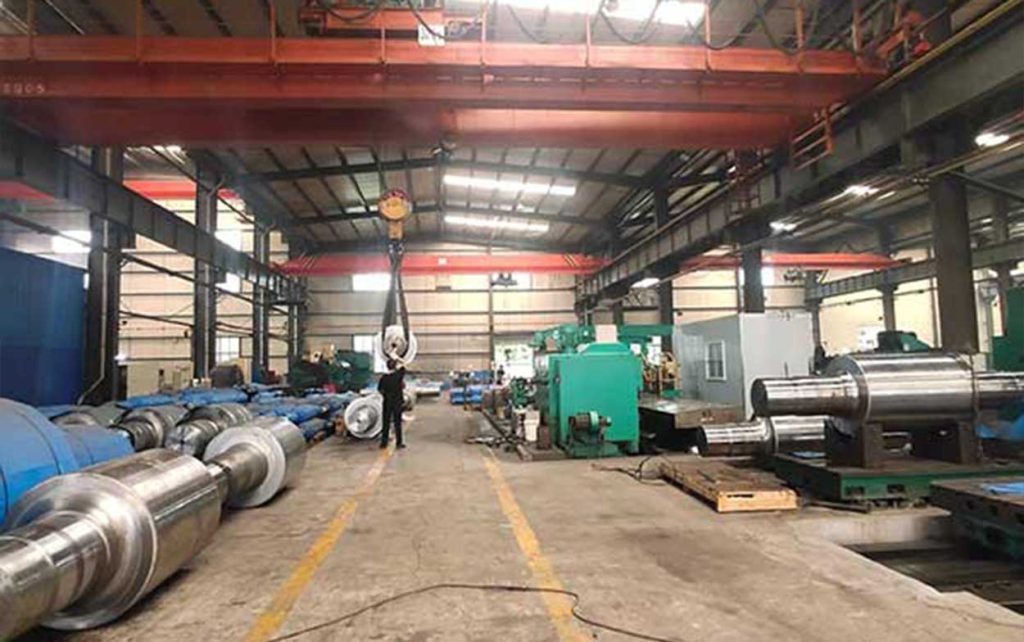Rolling Mill Roll Classification in Metallurgy
With the continuous development of society, the metallurgical industry occupies an increasingly important position in the manufacturing field, many fields will be involved in metallurgy, and the application of roller in the metallurgical industry is more and more widely. The quality of the rolling mill roll affects the normal operation, effect and efficiency of the machine tool. Do you know which kinds of mill roll can be classified according to different types? Let’s take a look at its specific classification in detail, so that we can have a better understanding.
1. According to the type of rolling mill, mill rolls can be divided into the following three categories.
(1) The plane roll, that is, the mill roll of plate and strip mill, has a cylindrical roll body. Generally, the roll of hot rolling mill is made into a micro concave shape, which can obtain better shape when it is heated and expanded; while the roll of cold rolling mill is made into a micro convex shape, which can produce bending during rolling, so as to obtain the better shape.
(2) It is used for rolling large, medium and small section steel, wire rod and blooming. The rolling groove is engraved on the roll surface to form the rolled piece.
(3) Special roll is used for steel tube mill, wheel mill, ball mill and piercer. The rolls of this kind of rolling mill have various shapes. For example, the rolls rolled by skew rolling principle in steel pipe rolling have cone shape, waist drum shape or plate shape.
2. The rolling mill roll is divided into casting roll and forging roll according to forming method, and integral roll, metallurgical composite roll and combined roll according to process method. Integral roll is divided into integral casting roll and integral forging roll. The outer layer, core and neck of the integral roll are cast or forged with the single material. The different structures and properties of the outer layer and neck of the integral roll are controlled and adjusted by the casting or forging process and heat treatment process. There are mainly three kinds of metallurgical composite casting rolls: semi washing composite casting, overflow (full washing) composite casting and centrifugal composite casting. In addition, there are composite rolls made by continuous casting outer layer forming method, electro slag casting composite method, spray deposition method, hot isostatic pressing method and other special methods.
The composite roll is mainly inlaid composite roll. It is an effective measure to replace casting composite roll with the inlaid composite roll. The outer layer of the roll (roll sleeve) and the roll shaft are matched by interference. In order to ensure the torque required for steel rolling, it is usually necessary to open a keyway or process a threaded hole in the inner side of the roll sleeve, and the roll sleeve and the roll shaft are combined firmly through splines or bolts.
The application of combined roll has a good effect on solving roll breakage, reducing roll consumption and improving rolling operation rate. In addition, the roll shaft of combined roll can be reused. In the manufacturing of combined roll, only melting and processing the roll sleeve are needed, which can reduce the energy and power consumption of roll production and is conducive to energy conservation and emission reduction.
Based on the digestion and absorption of the imported technology, the large H-beam production line of Masteel’s No.3 rolling plant has made a breakthrough in the hot charging and hot dismantling technology of composite roll. The first hot charging furnace and hot charging frame for composite roll have been built in China, and the utilization rate of the composite roll has reached 100% through the hot charging technology. While mastering the hot charging technology, the production line has started the research on the composite roll In order to solve the problem of composite roll hot tearing, a hot tearing furnace with independent intellectual property rights has been successfully developed. After hot tearing by the hot tearing furnace, the surface and internal properties of the roll shaft are intact and can be reused many times.
The successful application of hot charging and hot disassembling technology of composite roll in Masteel has effectively met the demand of composite roll of the universal rolling mill in H-beam production line. The hot charging and hot disassembling amount of composite roll can reach more than 100 pieces a year, saving more than 10 million yuan for the enterprise every year.
3. The roll can be divided into work roll, intermediate roll and support roll according to its use.
There are many kinds of roll classification, according to different types can be divided into different types, each classification has its corresponding characteristics, the role of each kind of roll, application field, manufacturing, performance and other aspects are different, we choose the corresponding roll products according to different needs, to achieve its due effect.
Send Inquiry
Contact info
Address
NO.67, Gaoxin Road, Xi’an 710075,
Shaanxi Province, China
Email Us
Call Us
+86-29-8536-7200
